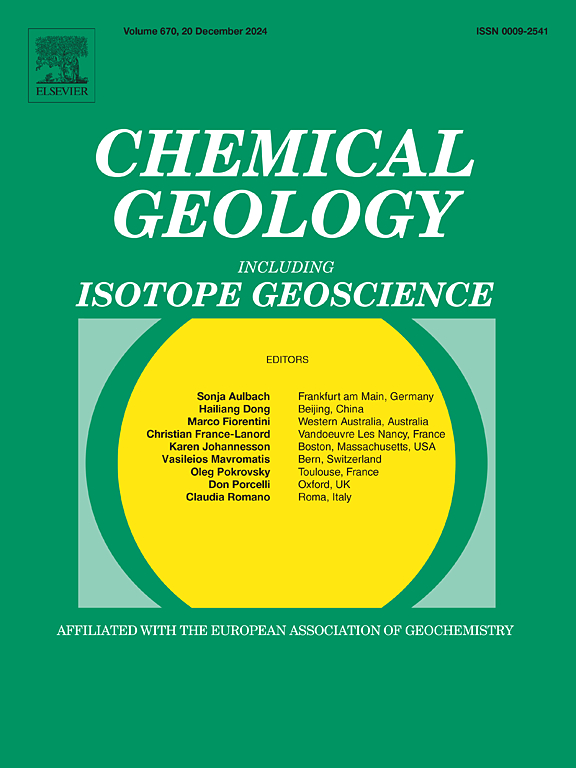Nitrate addition in different anoxic stages of acid paddy soil and the impacts on cadmium immobilization
IF 3.6
2区 地球科学
Q1 GEOCHEMISTRY & GEOPHYSICS
引用次数: 0
Abstract
Nitrate-reducing Fe(II) oxidation (NRFO) has emerged as a significant process in soil systems. However, few studies have examined the effects of coupled Fe and N cycling on cadmium (Cd) availability, especially in alternating flooding-drainage paddy soil. In this study, nitrate (NO₃−) was added to Cd-contaminated acidic paddy soil at different stages of flooding incubation. Results demonstrated that NO₃− addition to the microcosm system at 0, 10, and 30 days reduced bioavailable Cd proportions by 21.53 %, 21.02 %, and 15.07 %, respectively, compared to the treatment without addition of NO₃−. The NO₃− addition in the early stage proved to be more conductive to NRFO. As the NO₃− addition stimulated the formation of secondary iron minerals, which immobilized Cd through adsorption and co-precipitation, thus reducing its mobility and bioavailability. Furthermore, NO₃− addition increased soil pH, promoting the adsorption of Cd onto soil particles and further reducing its bioavailability. This study demonstrated that NRFO plays a crucial role in reducing Cd availability in acidic paddy soil and provides a novel insight into the mechanisms of NO₃− remediation in Cd-contaminated paddy soils.

酸性水稻土不同缺氧阶段硝酸盐添加及其对镉固定的影响
硝酸还原铁(II)氧化(NRFO)已成为土壤系统中一个重要的过程。然而,很少有研究考察铁氮耦合循环对镉(Cd)有效性的影响,特别是在水涝交替的水稻土中。在镉污染的酸性水稻土中,在不同的淹水孵化阶段添加硝酸盐NO₃−。结果表明,在微观系统中添加NO₃-在0、10和30天,与不添加NO₃-的处理相比,生物利用Cd的比例分别降低了21.53%、21.02%和15.07%。前期的NO₃−加成对NRFO的导电性更强。NO₃−的加入刺激了次生铁矿物的形成,次生铁矿物通过吸附和共沉淀固定Cd,从而降低了Cd的流动性和生物利用度。此外,NO₃−增加了土壤pH值,促进了Cd在土壤颗粒上的吸附,进一步降低了Cd的生物利用度。该研究表明NRFO在降低酸性水稻土的Cd有效性中起着至关重要的作用,并为Cd污染水稻土的NO₃-修复机制提供了新的见解。
本文章由计算机程序翻译,如有差异,请以英文原文为准。
求助全文
约1分钟内获得全文
求助全文
来源期刊

Chemical Geology
地学-地球化学与地球物理
CiteScore
7.20
自引率
10.30%
发文量
374
审稿时长
3.6 months
期刊介绍:
Chemical Geology is an international journal that publishes original research papers on isotopic and elemental geochemistry, geochronology and cosmochemistry.
The Journal focuses on chemical processes in igneous, metamorphic, and sedimentary petrology, low- and high-temperature aqueous solutions, biogeochemistry, the environment and cosmochemistry.
Papers that are field, experimentally, or computationally based are appropriate if they are of broad international interest. The Journal generally does not publish papers that are primarily of regional or local interest, or which are primarily focused on remediation and applied geochemistry.
The Journal also welcomes innovative papers dealing with significant analytical advances that are of wide interest in the community and extend significantly beyond the scope of what would be included in the methods section of a standard research paper.
 求助内容:
求助内容: 应助结果提醒方式:
应助结果提醒方式:


